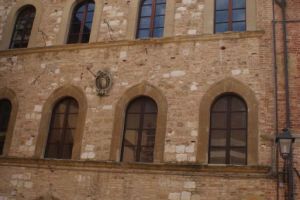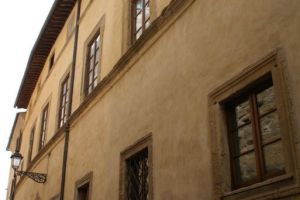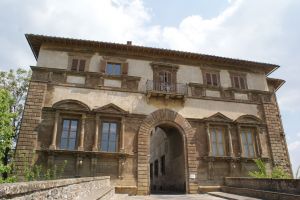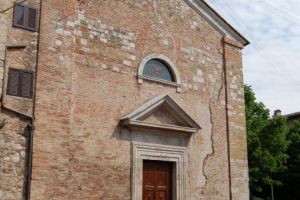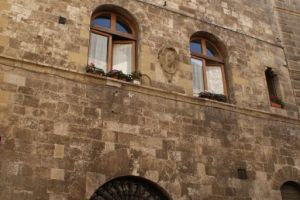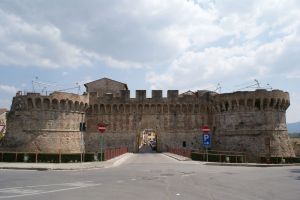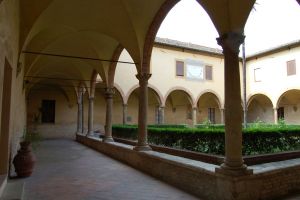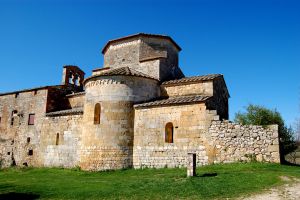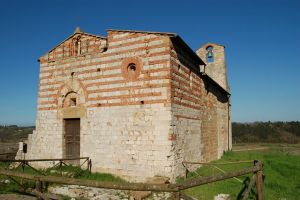The Co-cathedral of SS. Marziale and Alberto in Colle Val d'Elsa
Towards "Porta Nuova"
A different route can be taken to tour the city, this time in the direction of Porta Nuova, starting from Piazza del Duomo, the cathedral square, onto which face the Bishop’s Palace (Palazzo Vescovile) built by the first bishop Usimbardi, Palazzo Renieri di Sotto, Palazzo Buonccorsi, and the Seminary (Seminario Vescovile). Walking along Via del Castello, you pass Palazzo Giusti, with its doors and windows decorated with Florentine ashlar masonry. Via del Castello ends at Palazzo Campana, designed by the Florentine architect Giuliano di Baccio d’Agnolo. The ambitious plan of the owner Francesco Campana, a councilor of the Medici family, called for the demolition of part of the walls and the substitution of the wooden drawbridge with the current one in masonry to connect the hamlet (Borgo) with the ancient walled core of the castle (Castello). From the same period is the nearby Palazzo Renieri-Portigiani, now used as the Town Hall, a patrician palace built by a family in the Medici circle, as testified by the coat of arms on the façade, below which have been placed the arms of the Renieri, Portigiani, Usimbardi, and Tommasi. Via del Campana, which terminates in the square and church of Santa Caterina, is flanked by Palazzo Ceramelli, Palazzo Luparelli, and Palazzo Buoninsengi. Farther along, on Via Gracco del Secco, testifying to Colle’s allegiance to Florence, can be . . .
